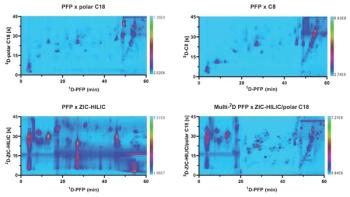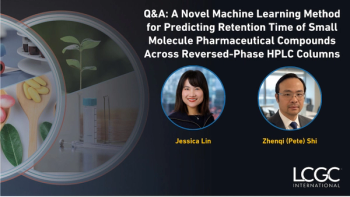
New Study Reviews 2D-LC for Natural Product Analysis
A new review article provides an overview of the use of two-dimensional liquid chromatography (2D-LC) for the quantitative analysis of natural products.
Scientists from Shenzhen Technology University in Shenzhen, published a review in the Journal of Chromatography A on two-dimensional liquid chromatography (2D-LC) for the quantitative analysis of natural products (1).
High-performance liquid chromatography (HPLC) is a powerful and effective tool for separating chemical components in samples. This process separates compounds dissolved in liquid samples, allowing qualitative and quantitative analyses of the components in a sample (2). However, when analyzing complex samples like natural herbs, only limited compounds can be separated and determined using conventional HPLC systems, due to its low resolution. This is even the case when the technique is connected to advanced and sensitive mass spectrometer.
Using 2D-LC, analytes are separated by a first dimension (1D) column, and then eluted fractions from the 1D were separately transferred to a second dimension (2D) separation. This technique, according to the scientists is more powerful and advanced of a tool than one-dimensional LC (1D-LC), with respect to leading peak capacity, resolution, and sensitivity. 2D-LC has been successfully applied to many challenging quantitative analyses in fields including food, herbs, stimulants, and biology. A study from scientists at the University of Messina assessed the power of 2D-LC in food chemistry, stating it could be a greener approach to food chemistry, due to its ability to reduce analysis time and solvent consumption. This effort could be expanded further when used on nutraceuticals and functional foods (3).
In this study, the researchers reviewed the use of 2D-LC in quantitative analysis of complex chemical compositions in natural products. They discussed the major advantages and disadvantages of various column couplings in 2D-LC based on various studies, along with suggested solutions to address identified drawbacks. Two-dimensional reversed-phase LC (RPLC×RPLC) is the most frequently used on-line 2D-LC system, due to its high separation efficiency and better mobile phase compatibility than other 2D-LC configurations, the researchers wrote. However, this technique may result in low orthogonality and peak capacity. To improve RPLC×RPLC system orthogonality as much as possible, modified RP stationary phases are developed with different selectivity. Other types of 2D-LC can involve hydrophilic interaction chromatography (HILIC)-RPLC, RPLC-strong cation exchange (SCX), and more.
While 2D-LC has been shown to have to hold various advantages, there are challenges that come with applying this technique; for example, with 2D-LC systems, high orthogonality is essential, especially when separating complex samples. Combining normal-phase and reversed-phase (RP) separations can offer high orthogonality, but applying this system is constrained by solvent incompatibility issues. Future works are encouraged to include advanced modulation interfaces to solve this problem. Additionally, more accurate and efficient data processing algorithms or software are needed to enhance the reliability and convenience of 2D-LC, both in qualitative and quantitative complex sample analysis.
References
(1) Lu, Y.; Qin, Q.; Pan, J.; Deng, S.; et al. Advanced Applications of Two-Dimensional Liquid Chromatography in Quantitative Analysis of Natural Products. J. Chromatogr. A 2025, 1743, 465662. DOI:
(2) What is HPLC (High Performance Liquid Chromatography)? Shimadzu 2025.
(3) Martín-Pozo, L.; Arena, K.; Cacciola, F.; Dugo, P.; Mondello, L. Comprehensive Two-Dimensional Liquid Chromatography in Food Analysis. Is Any Sample Preparation Necessary? Green Anal. Chem. 2022, 3, 100025. DOI:
Newsletter
Join the global community of analytical scientists who trust LCGC for insights on the latest techniques, trends, and expert solutions in chromatography.




